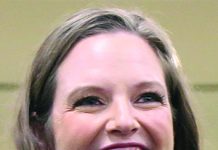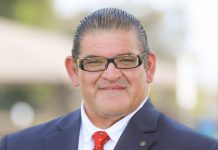By Luis A. Alejo, Kevin de León and Eduardo Garcia
On July 17, Gov. Gavin Newsom announced that counties on the state’s Covid-19 “monitoring list” must begin the new school year with distance learning. More than half of our state’s counties are on the list, representing more than 80% of California’s students. Implementing distance learning at this scale is much easier said, or ordered, than done.
According to the California Department of Education, enabling effective distance learning would require school districts across the state to purchase over 700,000 computers and establish over 300,000 Wi-Fi hotspots. To date, our state has fallen far short of those goals, creating a scenario in which significant numbers of students will not receive effective instruction because of an unacceptable digital divide in California.
This divide has long existed to much embarrassment in the technology capital of the world, where a persistent and systemic lack of access has robbed entire communities of the innumerable benefits of the internet. The Covid-19 pandemic has only exacerbated this divide by disproportionately impacting the same communities that have seen an increased incidence of infection and death due to the virus.
We cannot wait for the next pandemic, or for the current one to end, before we finally end these inequities. California must act to place a universal broadband infrastructure bond on the ballot in the future to ensure that all of our students have the equipment and internet access they need to succeed in our increasingly digital world.
It is estimated that 1.2 million students, or a whopping 20% of all students in California, do not have access to even the most basic internet resources in their homes. This problem is especially pervasive in California’s rural, low-income and communities of color.
A recent analysis by EdSource found that only 33% of rural households had internet access, while internet access is found in 78% of our urban regions. But even that figure is misleading, as these internet access disparities also persist in many large cities like Los Angeles and Oakland, where many low-income families and people of color lack the financial resources to afford the necessary technological infrastructure.
The Latino community, in particular, suffers from unacceptable levels of digital exclusion. According to SOMOS, over 40% of Latinos lack access to the internet, and more than 32% do not own a home computer. Latinos who are fortunate enough to have access are often plagued by slow connections.
It’s heartbreaking to see our students huddled at fast food restaurants or coffee shops because they’re the only places they can access the internet to download or submit classroom assignments. For the sake of our students, California must be better than this.
The state’s Advanced Services Fund is intended to provide broadband access to no less than 98% of California households by December 2022. However, its limited funding is insufficient to achieve that goal and its metrics need to be updated to reflect the reality of current and future needs.
The Fund’s current funding will be exhausted in the next few months, and its authorization to raise additional revenue needs to be extended. The program must also be reformed to allow local governments to apply for funding without having to wait on the sidelines while for-profit internet service providers have the first right to apply.
At present, the state has a total of six technology infrastructure programs that must be reformed and expanded this year to include broadband internet access. Gov. Newsom and the State Legislature should also empower local communities by approving state-backed municipal bonds this year to expand fiber infrastructure into the unserved areas. But these programs alone will not be enough.
To do justice to our students, a long-term universal fiber infrastructure bond must be placed before the voters as soon as possible. We cannot wait another 10 or 20 years, because we’ve already waited for far too long.
Assemblymember Eduardo Garcia, who represents rural Coachella and Imperial Valleys, will introduce legislation early next year to begin this effort with other colleagues. Those of us in county and city governments look forward to helping build a broad coalition of supporters, including our schools and teachers, to rally behind it.
Last April, State Superintendent Tony Thurmond declared “Every student should have a computer and every student should have access to the internet.” We agree. And it is time to make that a reality for every student in California.
•••
Luis A. Alejo is a Monterey County Supervisor, Kevin de León is Senate President Pro Tem Emeritus and a City of Los Angeles Councilmember-Elect, and Eduardo Garcia is a State Assemblymember representing the 56th District.












